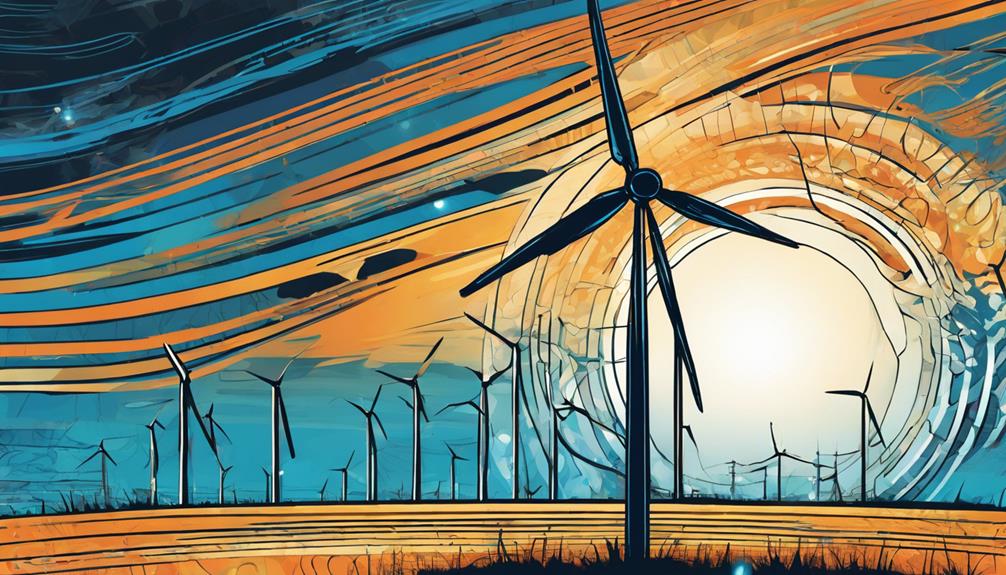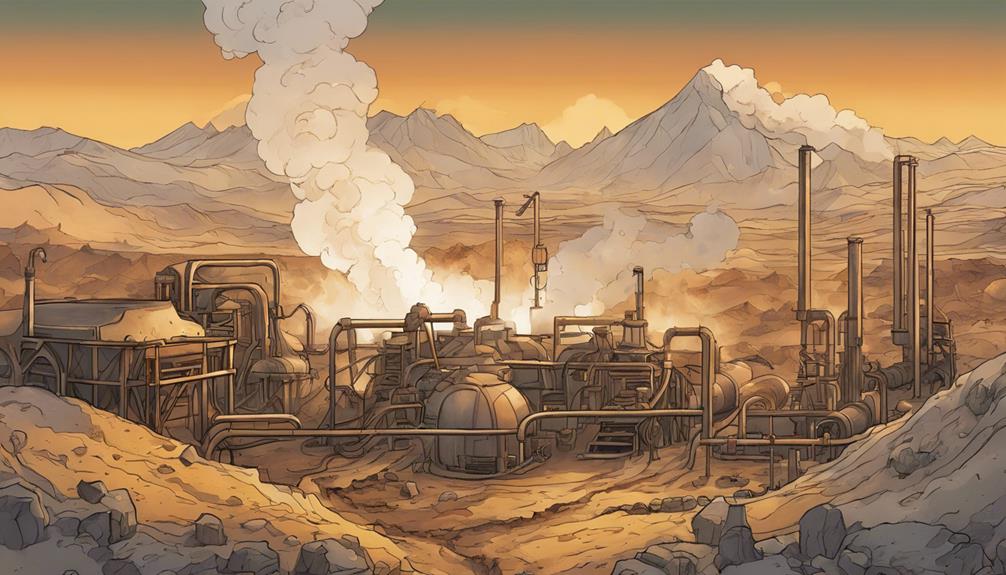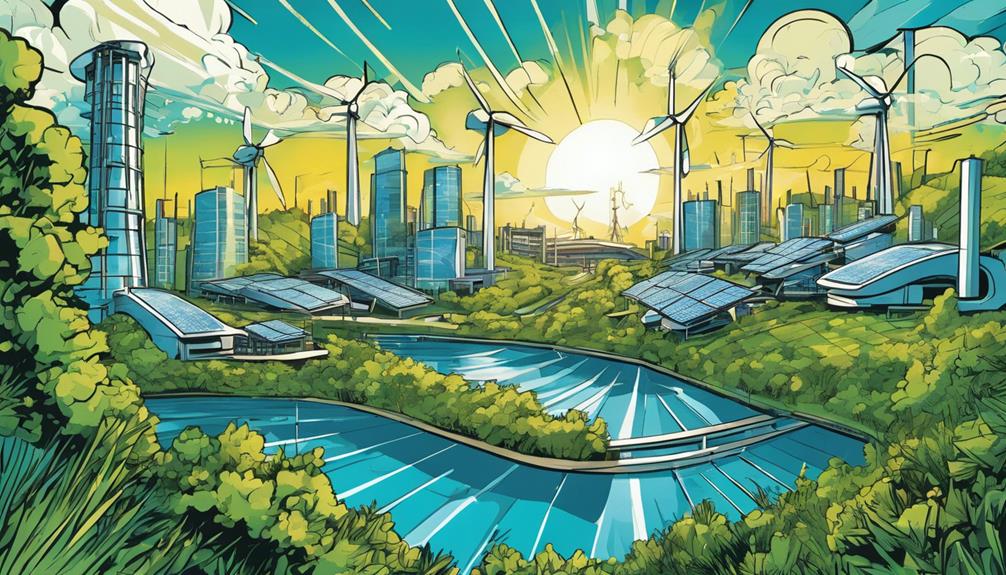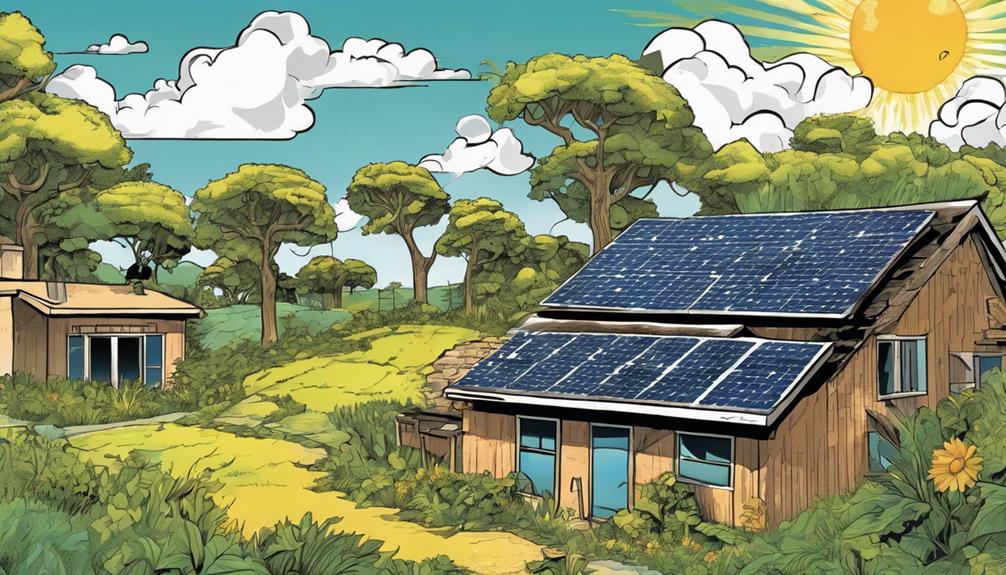As I explore geothermal energy maintenance, I'm struck by the significant upfront costs versus long-term savings. Initial installation costs range from $10,000 to $30,000 per ton of capacity, but geothermal systems can save up to 70% on heating and cooling costs. Ongoing maintenance expenses are essential to take into account, with routine costs ranging from $500 to $2,000 per year. However, with proper upkeep, energy savings can outweigh the initial investment. I'm excited to dive deeper into the strategies and metrics that can help maximize these savings – and I'm sure you will be too as you discover more about the world of geothermal energy maintenance.
Key Takeaways
- Geothermal systems can save up to 70% on heating and cooling costs, outweighing the initial investment over their lifespan.
- Routine maintenance costs range from $500 to $2,000 per year, with repair and replacement costs ranging from $1,000 to $5,000 per occurrence.
- Developing a repair and replacement strategy is essential for efficient operation, prioritizing regular inspections and maintenance to prevent major problems.
- Tracking performance metrics, such as Coefficient of Performance (COP) and energy consumption, helps optimize system efficiency and identify areas for improvement.
- Optimizing system performance through regular inspections, timely repairs, and energy efficiency improvements can lead to significant energy savings and extended system lifespan.
Initial Installation Costs Breakdown
When pondering geothermal energy maintenance, grasping the initial installation costs is vital, which can range from $10,000 to $30,000 per ton of capacity, totaling $20,000 to $60,000 for an average-sized home. I've discovered that these upfront costs may appear intimidating, but they're a worthwhile investment.
Geothermal systems can save up to 70% on heating and cooling costs compared to traditional systems. Over the system's lifespan, these energy savings can outweigh the initial investment. It's crucial to contemplate the long-term benefits and energy savings when deciding on a geothermal system.
Ongoing Maintenance Expense Analysis
I've found that while the initial installation costs of a geothermal system can be substantial, it's the ongoing maintenance expenses that ultimately determine the system's long-term cost-effectiveness. To break it down, here's a snapshot of what you can expect:
| Expense Category | Cost Range |
|---|---|
| Routine Maintenance | $500 – $2,000 per year |
| Repair and Replacement | $1,000 – $5,000 per occurrence |
| Monitoring and Control | $500 – $2,000 per year |
| Energy Efficiency Improvements | $1,000 – $5,000 per upgrade |
| Total Ongoing Expenses | $3,000 – $14,000 per year |
Repair and Replacement Strategies

To guarantee the geothermal system operates efficiently and effectively, developing a repair and replacement strategy that addresses potential issues before they become major problems is essential. As a homeowner, I need to prioritize regular inspections and maintenance to identify and fix minor issues before they escalate.
This proactive approach helps reduce the risk of equipment failure, minimizes downtime, and saves me from costly repairs. By investing in a maintenance contract, I can make sure that repair and replacement costs are covered for a fixed fee, providing peace of mind and budget predictability.
Monitoring System Performance Metrics
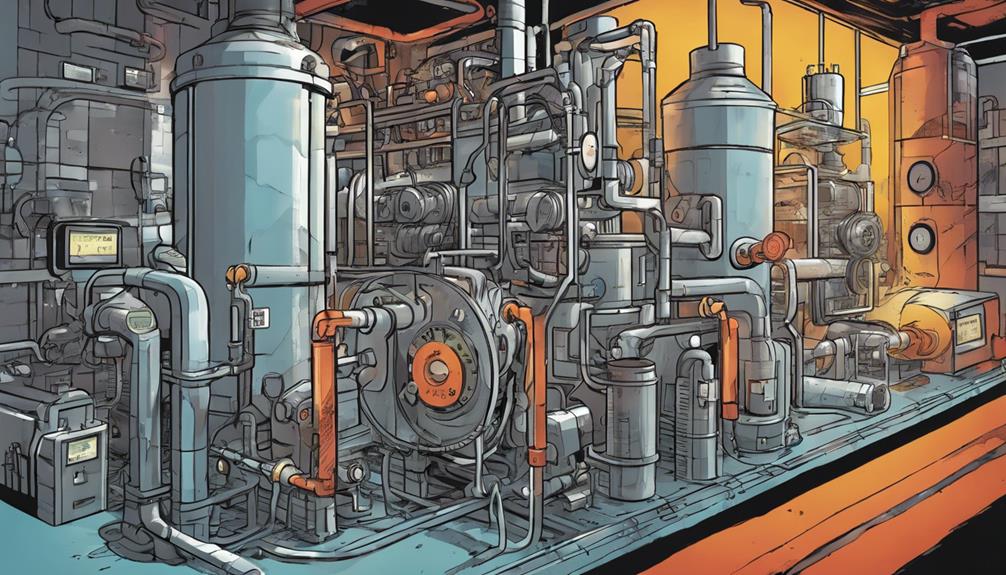
Tracking my geothermal system's performance metrics helps me stay on top of its efficiency and identify areas for improvement, ensuring I reap the maximum benefits from my investment. By monitoring key metrics, I can optimize my system's performance, reduce energy consumption, and lower maintenance costs. Here's a breakdown of the key performance metrics I track:
| Metric | Target Range | Current Status |
|---|---|---|
| Coefficient of Performance (COP) | 3-4 | 3.2 |
| Energy Consumption (kWh) | 500-700 | 580 |
| System Uptime (%) | 95-99 | 97 |
Maximizing Energy Savings Potential
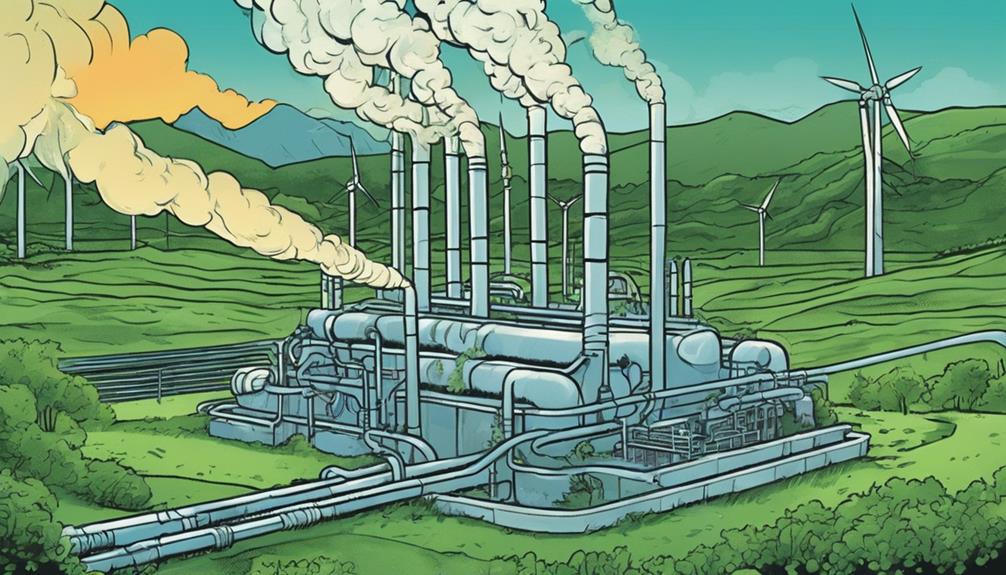
By optimizing my geothermal system's performance, I can access significant energy savings and reduce my carbon footprint.
To maximize energy savings potential, I focus on regular inspections, timely repairs, and energy efficiency improvements. This approach helps minimize maintenance costs and extends the system's lifespan.
By monitoring energy consumption and system performance, I can identify areas for improvement and make informed decisions. For instance, upgrading to high-efficiency components or adjusting my thermostat settings can lead to substantial energy savings.
Frequently Asked Questions
How Does Geothermal Energy Compare to Traditional HVAC Systems in Terms of Noise?
Geothermal energy systems are as quiet as a whisper in a library, unlike traditional HVAC systems that can be as loud as a chainsaw in your backyard, offering a peaceful living experience.
Can Geothermal Systems Be Installed in Areas With Limited Land Availability?
Yes, geothermal systems can be installed in areas with limited land availability. While traditional horizontal systems require more space, vertical and open-loop systems can be used in smaller areas, making them a viable option.
Are There Any Government Incentives for Geothermal Energy System Installations?
'As I immerse myself in the world of geothermal energy, I'm thrilled to discover that, yes, government incentives abound For instance, the US offers tax credits and rebates, making the initial investment more palatable.'
How Does Geothermal Energy Impact the Environment and Ecosystem?
I'm curious about geothermal energy's environmental impact – it's a game-changer, producing minimal greenhouse gas emissions and no air pollution, making it a clean and sustainable option for our planet's ecosystem.
Can Geothermal Systems Be Integrated With Existing HVAC Infrastructure?
"Did you know geothermal systems can save up to 70% on heating and cooling costs? I can integrate geothermal systems with existing HVAC infrastructure, leveraging existing ductwork and equipment to minimize installation costs and maximize energy efficiency."
What Are the Maintenance Costs and Savings Associated with Geothermal Energy?
Geothermal energy offers significant savings in maintenance costs due to its reliable and long-lasting nature. However, the initial investment is impacted by geological hurdles for geothermal energy, such as drilling challenges and exploration expenses. Once operational, the ongoing costs are low, resulting in substantial long-term savings.
Conclusion
As I reflect on my journey into geothermal energy, I'm reminded that the initial sticker shock gives way to a tranquil sea of long-term savings.
With regular tune-ups, the system hum of my geothermal engine purrs along, maximizing energy efficiency and trimming my utility bills.
By keeping a watchful eye on performance metrics, I can navigate any maintenance hurdles that arise, ensuring my investment remains a wise one.



